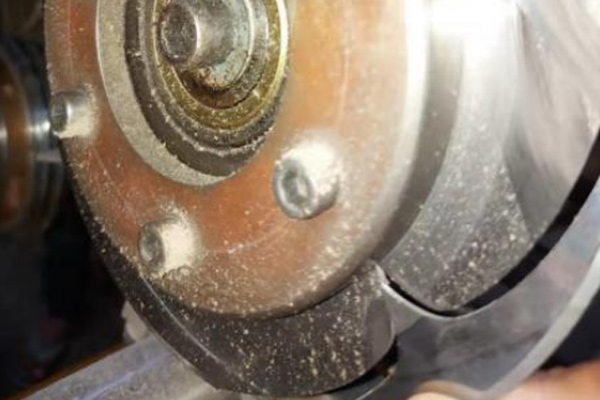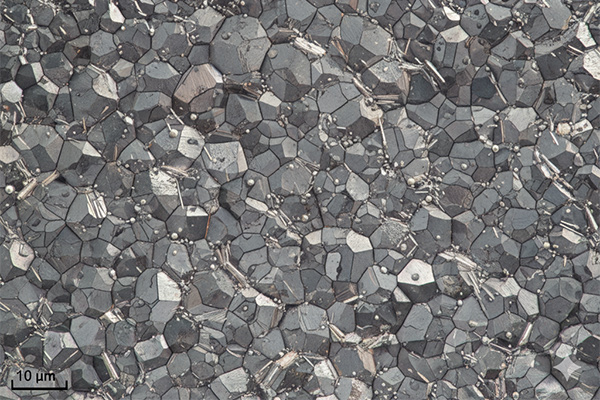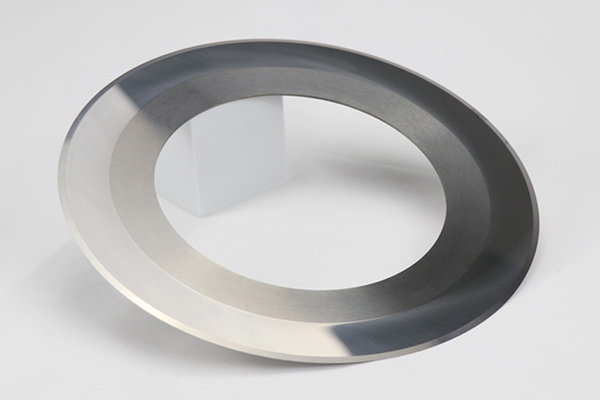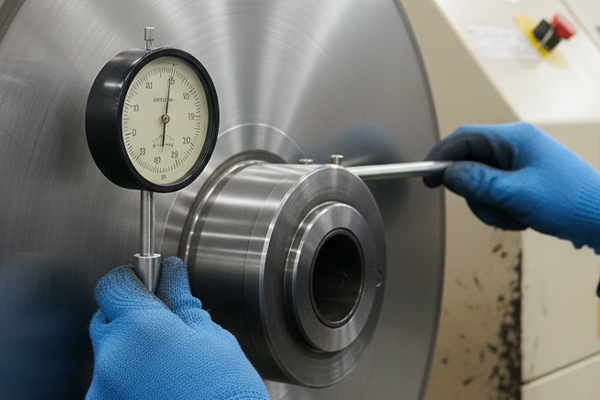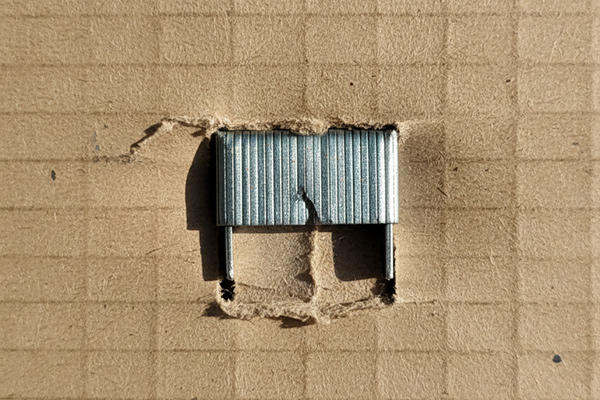Your slitting knives are chipping and failing too often. This causes expensive downtime and wasted material. Understanding the root causes is the first step to finally fixing the problem for good.
The most common causes for blade chipping, poor cutting, and short life are a combination of factors. These include using the wrong blade material, incorrect sharpening, poor machine setup, improper cutting settings, and issues with the corrugated board itself. Addressing these areas solves most performance problems.
As a sales manager at PASSION, I've seen these issues countless times. A new blade that fails in a week is frustrating for everyone. The good news is that these problems are almost always preventable. It’s rarely just one thing, but a mix of small issues that add up. Let’s break down the main culprits one by one. By looking at your whole process, we can find the real source of the problem and get your production line running smoothly again.
Is Improper Blade Material or Heat Treatment the Cause?
You bought a new blade, but it failed almost immediately. It’s easy to think the blade was bad. The truth is, the blade's material is the foundation of its performance.
Yes, the wrong material or poor heat treatment is a major cause of failure. If a blade material isn't hard enough or tough enough for your a specific corrugated board, it will wear down quickly or chip. Heat treatment is what locks in these essential properties for long-lasting performance.
Every blade needs the right balance of hardness and toughness. Think of it like this: hardness helps the blade resist wear and stay sharp longer. Toughness helps the blade resist chipping or breaking when it hits something hard. For corrugated board, you need both.
This is something I explain to customers a lot. They might ask for the "hardest" steel, but sometimes a slightly less hard but tougher steel is better for their specific operation, especially if they cut thick, heavy-duty board.
Hardness vs. Toughness
The right material depends entirely on what you are cutting. A blade that works perfectly for thin, single-wall board might fail quickly on thick, triple-wall board. The material must match a specific job.
- Hardness: This is the blade's ability to resist wear from friction. A harder blade holds its edge for a longer time.
- Toughness: This is the blade's ability to absorb impact without fracturing or chipping. A tougher blade is more forgiving.
Why Heat Treatment Matters
Heat treatment is a special heating and cooling process. It changes the internal structure of the steel to get that perfect balance of hardness and toughness. If this process is not done correctly, even the best steel will perform poorly. This is one of the reasons we control our heat treatment[^1] so carefully at PASSION. A failed heat treatment means a failed blade.
| Material Type | Key Property | Best Use Case for Corrugated Board |
|---|---|---|
| Tool Steel (D2) | Good balance, wear-resistant | General purpose, single and double-wall |
| HSS (M2) | High hardness, heat resistant | High-speed operations, thick board |
| Tungsten Carbide | Extreme hardness, wear-proof | Very abrasive materials, high-volume lines |
Could Incorrect Sharpening or a Poor Edge Finish be the Problem?
Your cuts look messy, with torn and ragged edges. This makes your final product look unprofessional and low-quality. The secret to a clean cut is all in the blade's edge.
Absolutely. A dull blade or an edge with a rough finish will tear the paper instead of slicing it. This creates "ragged edges" and can cause the blade to overheat and develop micro-cracks, leading to chipping and failure. Proper, regular grinding is essential for performance.
I remember a case with a customer, Jacky. He called me, frustrated because his new blades were chipping after only a few days. The nicks on the edge were small at first, but they grew quickly until the blade fractured. He was convinced the blades were defective.
I asked him to check his sharpening process. After some investigation, we found the problem wasn't the blade, but the grinding wheel[^2]. It was installed incorrectly, causing it to wobble. This wobble created an uneven, weak edge on the blade, making it easy to chip.
Diagnosing Grinding Issues
When Jacky inspected his equipment, he found two things.
- Grinding Wheel Runout: The grinding wheel had excessive runout, meaning it wasn't spinning perfectly true. This was because it was not mounted correctly after the last change. We had him reinstall it, and the runout was gone.
- Grinding Wheel Bearings: In another machine, the bearings for the grinding wheel were binding up. They were old and worn out. This also caused vibration and a poor-quality grind. He replaced the bearings, and the problem was solved.
Edge Angles and Finish Matter
A high-quality cut requires a sharp, polished edge. A blade that is not re-ground often enough becomes dull. A dull blade generates more heat and stress, which leads to micro-cracks and, eventually, a broken blade.
| Sharpening Issue | Description | Result on Corrugated Board |
|---|---|---|
| Angle Too Acute | The edge is too thin and sharp. | Very clean cut, but edge is weak and chips easily. |
| Angle Too Obtuse | The edge is too thick and blunt. | Strong edge, but it crushes and tears the board. |
| Poor Surface Finish | The edge is rough from a bad grinding wheel. | Ragged, fuzzy cuts. Increased friction and blade wear. |
What if it’s a Poor Machine Condition or Improper Installation?
You just installed a brand-new, high-quality blade. But the cuts are still bad and the blade is already showing wear. It is very frustrating when the new part doesn't fix the problem.
This is a very common scenario. Even the best blade in the world will fail if the machine is in poor condition or the blade is not installed correctly. Misalignment, vibration, or runout from the machine will destroy a cutting edge very quickly and lead to poor performance.
A blade is only one part of a complex cutting system. The machine that holds it is just as important. Improper installation is one of the top reasons I see for premature blade failure. The blade must be perfectly aligned with the bottom knife or slot, and it must run true without any wobble.
Even a small amount of misalignment puts huge stress on one side of the cutting edge. This uneven pressure causes rapid wear on one side and can easily lead to chipping. Machine vibration[^3] is also a blade killer. Constant shaking fatigues the steel and can cause the cutting edge to fail.
Key Installation and Machine Checks
To make sure your machine is not the problem, you should have a regular checklist. This ensures every blade change is done correctly and helps you spot machine issues before they ruin your blades. A little bit of prevention here saves a lot of money on replacement blades and downtime.
Simple Installation Checklist
| Check Point | What to Look For | Why It's Important |
|---|---|---|
| Clean Surfaces | Dust, rust, or old paper debris on hubs. | Debris can cause misalignment and runout. |
| Blade Runout | Wobble as the blade spins (use a dial indicator). | Runout causes impact stress and uneven wear on the edge. |
| Blade Alignment | Is the top blade perfectly centered with the bottom? | Misalignment causes side-loading and chipping. |
| Machine Vibration | Shaking or unusual noise during operation. | Vibration fatigues the blade steel, leading to cracks. |
Are My Cutting Parameters Set Incorrectly?
You are trying to increase production speed, but the quality of your cuts is getting worse. This trade-off between speed and quality is costing you money in the long run.
Yes, incorrect cutting parameters[^4] are a major cause of poor performance. Running the machine too fast or using the wrong overlap between the top and bottom knives can create too much heat and stress. This will wear out the blade much faster and lead to bad cuts.
Finding the sweet spot for your cutting parameters is critical. Every type of corrugated board behaves differently, so you can't use the same settings for everything. The three most important parameters to watch are cutting speed, blade overlap, and pressure.
Think of it like driving a car. You can't just press the gas pedal to the floor all the time, especially on a curvy road. You have to adjust your speed to match the conditions. The same is true for slitting. You have to adjust your machine's settings to match the board you are cutting. Trying to cut thick, heavy triple-wall board at the same speed as thin single-wall board will only lead to problems.
Speed, Overlap, and Pressure
These three factors work together. Changing one will affect the others.
- Speed: Running too fast generates a lot of heat. This heat can soften the blade's edge, causing it to become dull very quickly.
- Overlap: This is how much the top and bottom blades cross. Too much overlap creates excessive friction and side-pressure, which can bend or chip the blade. Too little overlap will not cut through the board completely.
- Pressure: The force pushing the blade into the board. Too much pressure can crush the board's flutes and put unnecessary stress on the blade.
| Parameter | Setting Too High | Setting Too Low |
|---|---|---|
| Speed | Excessive heat, rapid blade wear, burnt edges. | Inefficient production. |
| Overlap | High friction, side-pressure, risk of blade chipping. | Incomplete cuts, ragged bottom liner. |
| Pressure | Crushed board edges, high stress on blade bearings. | Incomplete cuts, blade "skipping" on the surface. |
Could it be Poor Corrugated Board Quality or Foreign Material?
Sometimes your blades last for weeks, and other times they fail in a few days. This inconsistency makes it impossible to plan your maintenance schedule and budget for new blades.
Definitely. Variations in the quality of the corrugated board can have a huge impact on blade life. Abnormally thick paper, high moisture content, or abrasive fillers all increase blade wear. Hard foreign materials like metal staples or sand can cause immediate, catastrophic chipping.
Often, we focus so much on the blade and the machine that we forget to look at what we are actually cutting. The corrugated board itself can be the source of the problem. This is especially true when using board with a high percentage of recycled content.
Recycled board can contain small, abrasive particles like sand, dirt, or even tiny metal fragments. While you might not see them, your blade will feel them. These particles act like sandpaper, grinding down the blade's edge with every cut. I have seen blades cutting board with high recycled content wear out twice as fast as blades cutting board made from virgin paper. Also, things like metal staples left in the board can instantly destroy a blade edge on impact.
Common Board-Related Issues
The consistency of the corrugated board is key. Even a single bad batch of board can cause a lot of problems for your production line.
- Abrasive Content: Recycled fibers often contain abrasive fillers (like clay or calcium carbonate) and contaminants that wear down the blade edge.
- Moisture Content: Board that is too wet or too dry can be harder to cut cleanly. High moisture can make the paper soft and difficult to slice, while very dry paper can be brittle and abrasive.
- Foreign Objects: This is the most dangerous issue. Staples, small rocks, or other hard debris accidentally packed with the board can cause instant chipping or shattering of the blade.
| Contaminant/Issue | Effect on Blade | How to Identify

